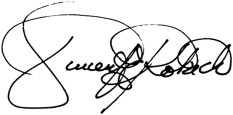Each year we publish a supplemental issue of the American Journal of Orthodontics and Dentofacial Orthopedics . There are 2 purposes of this extra issue. The first is to allow me, as the editor-in-chief, to select a theme around which I can gather a series of articles on a topic that would be of interest to practicing orthodontists. The second purpose is to allow our loyal advertisers to be listed in the Journal so that our subscribers will have a product guide for contacting manufacturers.
Two years ago, you might recall that the topic of the supplement was the use of cone-beam computed tomography imaging in orthodontic practice and research. Last year, I chose adult orthodontics, and we featured several articles and case reports that highlighted the scope of orthodontic treatment for mature patients. This year, I have chosen craniofacial anomalies as the theme for the supplement.
I am excited about this year’s supplement. As orthodontists, from time to time, we are confronted with treating a patient whose malocclusion is made more challenging by problems such as hemifacial microsomia, unilateral or bilateral cleft lip and palate, craniosynostosis, Apert’s syndrome, oral-facial-digital syndrome, or other syndromes involving the craniofacial complex. Because of the complexities of the additional skeletal, soft-tissue, facial, and calvarial problems in these patients, an orthodontist simply cannot make all decisions regarding the extent and timing of the orthodontic treatment. If you have been challenged to treat these types of patients, you will enjoy this supplement’s articles. You will find 6 outstanding original articles describing the appropriate parameters of care for specific craniofacial anomalies.
In addition, you can explore 6 excellent case reports submitted by your orthodontic colleagues and their team members, showing exceptional accomplishments in the management of young patients with debilitating craniofacial anomalies. There is also a risk management article that discusses the responsibilities encountered when referring or accepting a patient with craniofacial anomalies. Finally, the “Ethics in Orthodontics” column appropriately discusses how to decide when enough treatment has been rendered on a patient with a severe craniofacial anomaly.
The topic of treating patients with craniofacial anomalies is especially meaningful to me because for over 25 years I was a member of our local Craniofacial Review Team. There are 2 craniofacial teams in our state. The team at a university children’s hospital handles patients in the northern portion of our state, and our team typically monitors the management of patients who live in the southern part of our state.
If you have been a member of a craniofacial team or have submitted your records to be analyzed by a craniofacial team, you know the value of having a team assess these patients’ needs. Over the years, my personal experience has been that the most common craniofacial anomaly requiring orthodontic intervention is cleft lip and palate. I have treated many of these patients. Although the protocol for sequencing treatment is similar, nuances in each patient’s management require assessment from various sources.
Our craniofacial team consists of an orthodontist, a pediatric dentist, an oral and maxillofacial surgeon, a plastic surgeon, an audiologist, an otolaryngologist, a pediatrician, a social worker, a speech therapist, a public health nurse, and a coordinator. We meet once a month to discuss the coordinated management of patients under observation and treatment by members of the team or private practitioners in outlying areas of our state. Obviously, not every orthodontist has the luxury of coordinating his or her efforts with such a broadly based team. But that is the purpose of having a craniofacial center in your state. It allows you to access experts’ experience to help plan, sequence, and coordinate the treatment of even the most difficult craniofacial problems.
I sincerely hope that you will learn from the wealth of information on treating patients with craniofacial anomalies in this issue, and that you will use the product guide to contact the many companies that support our Journal and our orthodontic specialty. Enjoy.





